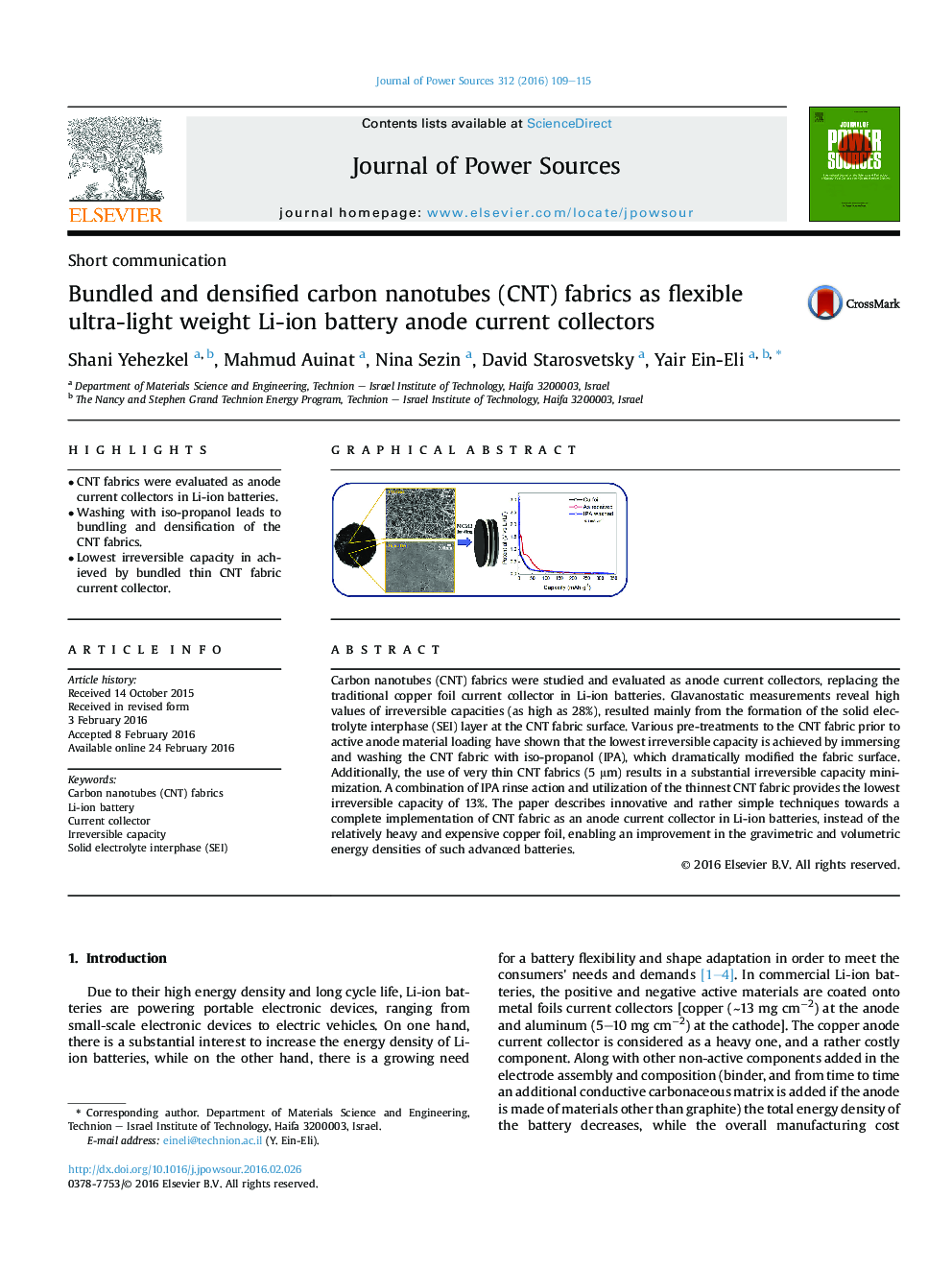| Article ID | Journal | Published Year | Pages | File Type |
|---|---|---|---|---|
| 1285451 | Journal of Power Sources | 2016 | 7 Pages |
•CNT fabrics were evaluated as anode current collectors in Li-ion batteries.•Washing with iso-propanol leads to bundling and densification of the CNT fabrics.•Lowest irreversible capacity in achieved by bundled thin CNT fabric current collector.
Carbon nanotubes (CNT) fabrics were studied and evaluated as anode current collectors, replacing the traditional copper foil current collector in Li-ion batteries. Glavanostatic measurements reveal high values of irreversible capacities (as high as 28%), resulted mainly from the formation of the solid electrolyte interphase (SEI) layer at the CNT fabric surface. Various pre-treatments to the CNT fabric prior to active anode material loading have shown that the lowest irreversible capacity is achieved by immersing and washing the CNT fabric with iso-propanol (IPA), which dramatically modified the fabric surface. Additionally, the use of very thin CNT fabrics (5 μm) results in a substantial irreversible capacity minimization. A combination of IPA rinse action and utilization of the thinnest CNT fabric provides the lowest irreversible capacity of 13%. The paper describes innovative and rather simple techniques towards a complete implementation of CNT fabric as an anode current collector in Li-ion batteries, instead of the relatively heavy and expensive copper foil, enabling an improvement in the gravimetric and volumetric energy densities of such advanced batteries.
Graphical abstractFigure optionsDownload full-size imageDownload as PowerPoint slide
